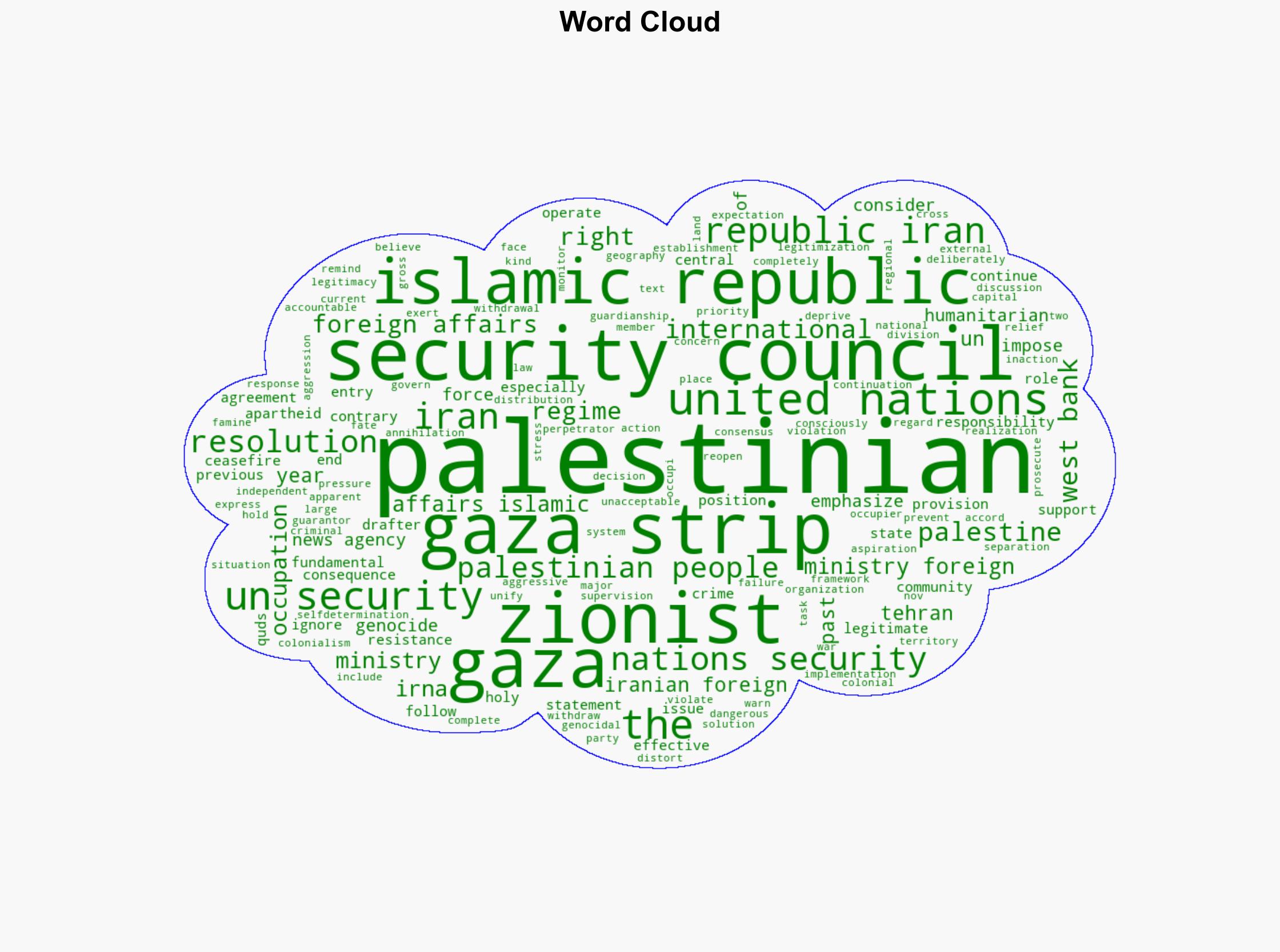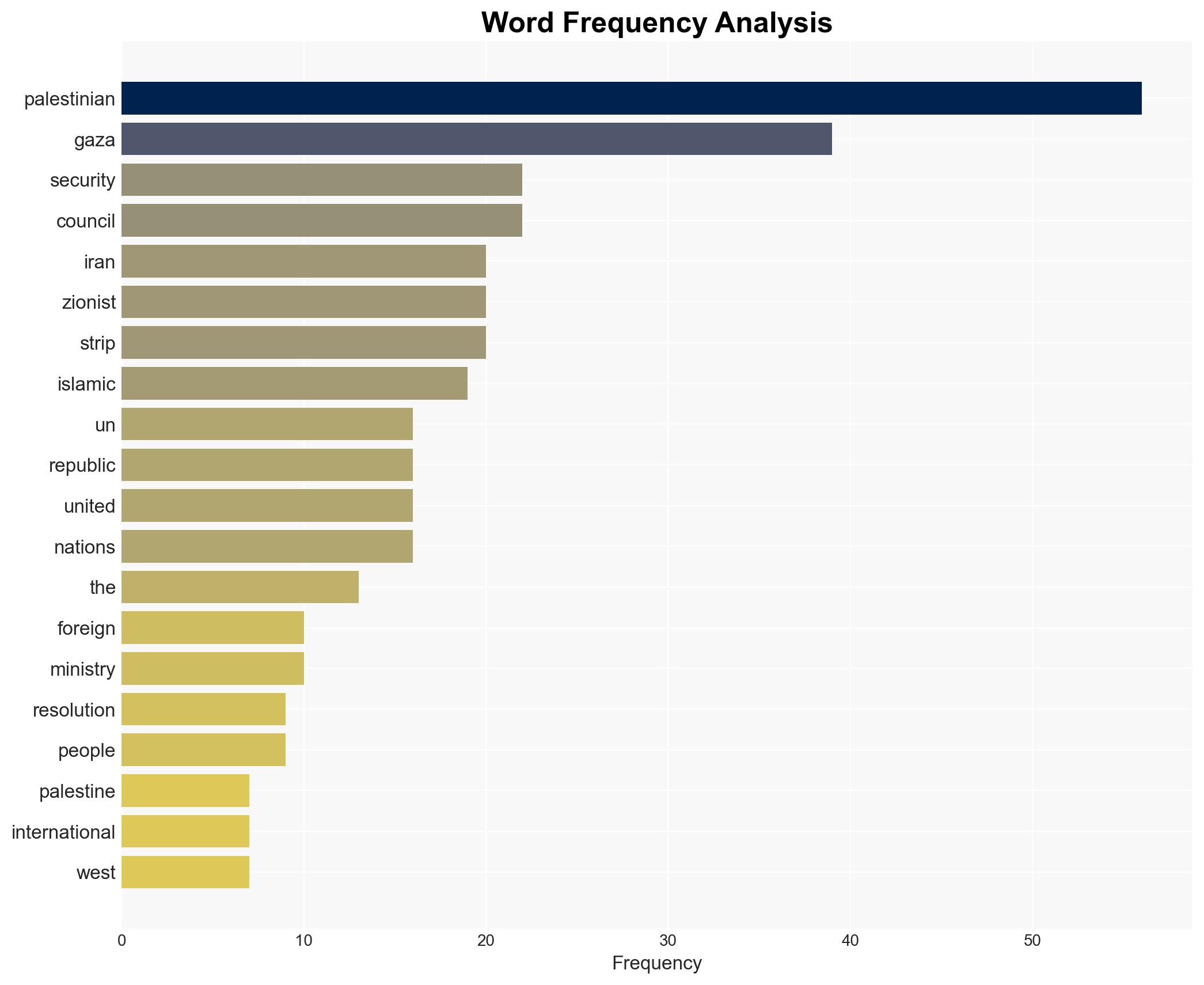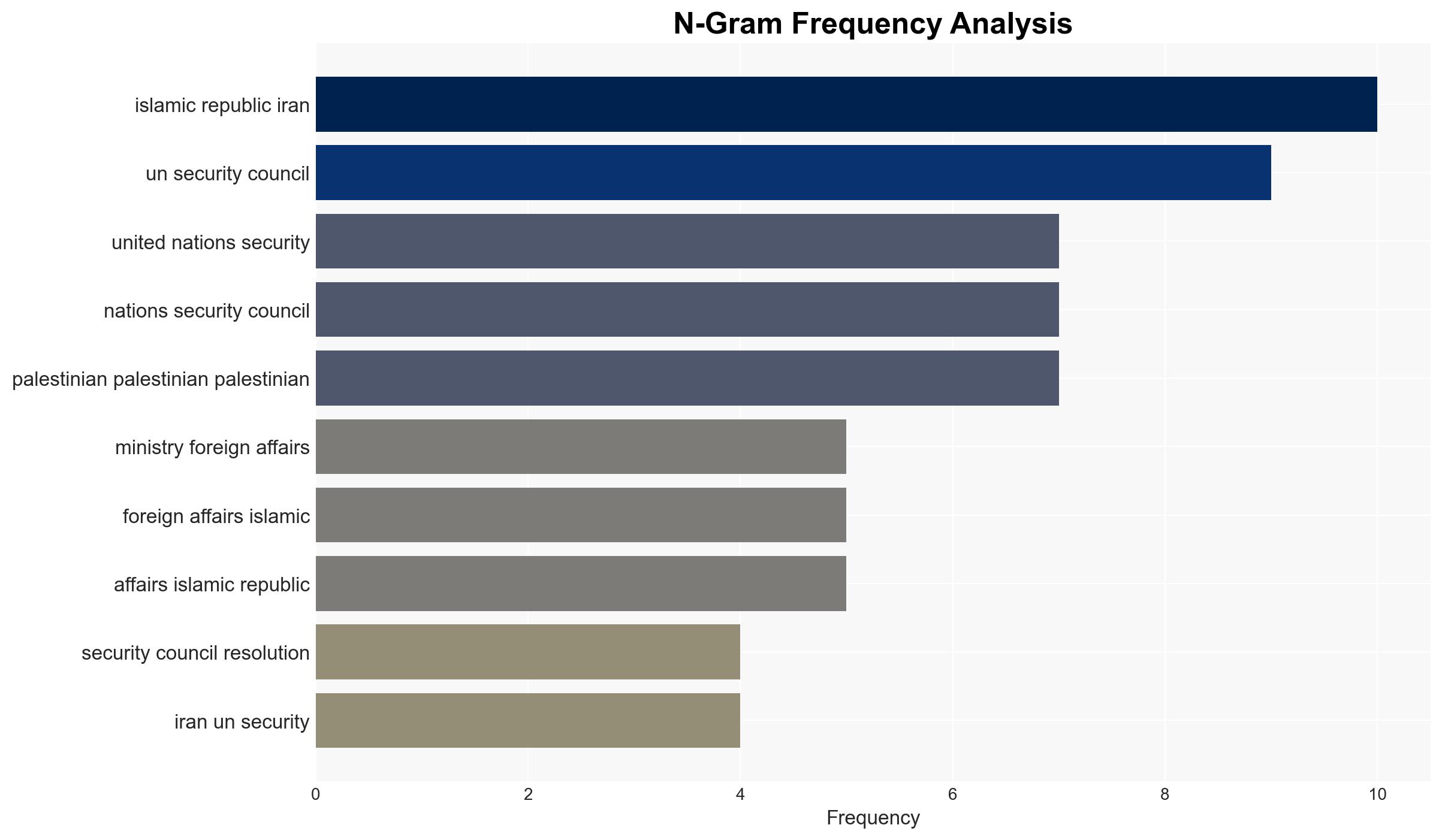Iran Major part of UN Security Council resolution on Gaza violates rights of Palestinian people – Globalsecurity.org
Published on: 2025-11-19
AI-powered OSINT brief from verified open sources. Automated NLP signal extraction with human verification. See our Methodology and Why WorldWideWatchers.
Intelligence Report:
1. BLUF (Bottom Line Up Front)
The Iranian Foreign Ministry’s statement on the UN Security Council resolution regarding Gaza reflects a strategic positioning against perceived international legitimization of Israeli actions in Gaza. The most supported hypothesis is that Iran is using this narrative to bolster its regional influence and support for Palestinian groups. Confidence Level: Moderate. Recommended action includes monitoring Iran’s diplomatic and military engagements in the region for signs of escalation or shifts in alliances.
2. Competing Hypotheses
Hypothesis 1: Iran’s statement is primarily a diplomatic maneuver to strengthen its influence over Palestinian factions and regional allies by positioning itself as a defender of Palestinian rights.
Hypothesis 2: Iran’s statement is a genuine expression of concern over the UN resolution, reflecting its long-standing opposition to Israeli policies and support for Palestinian self-determination.
Hypothesis 1 is more likely given Iran’s historical use of the Palestinian issue to enhance its regional influence and counter Israeli and Western presence in the Middle East.
3. Key Assumptions and Red Flags
Assumptions: Iran’s statements are assumed to reflect its strategic interests rather than purely humanitarian concerns. The UN resolution is assumed to be perceived by Iran as favoring Israeli interests.
Red Flags: Potential for Iran to escalate support for militant groups in Gaza as a response to perceived international bias. Increased rhetoric could signal preparation for more aggressive posturing.
4. Implications and Strategic Risks
Iran’s stance could lead to increased tensions in the Middle East, potentially affecting regional stability. There is a risk of escalation in proxy conflicts involving Iranian-backed groups. Politically, this could strain Iran’s relations with countries supporting the UN resolution. Economically, sanctions or diplomatic fallout could impact Iran’s economy. Informationally, Iran may leverage media to rally regional and international support against perceived injustices.
5. Recommendations and Outlook
- Monitor Iran’s diplomatic engagements and military activities in the region for signs of escalation.
- Engage with regional allies to de-escalate tensions and promote dialogue between conflicting parties.
- Best Scenario: Diplomatic efforts lead to a revised resolution that addresses concerns, reducing tensions.
- Worst Scenario: Iran increases support for militant activities, leading to broader regional conflict.
- Most-likely Scenario: Continued diplomatic posturing without significant change in the status quo.
6. Key Individuals and Entities
Iranian Foreign Ministry: Central in articulating Iran’s position on international platforms.
United Nations Security Council: The body whose resolution is under scrutiny by Iran.
7. Thematic Tags
Structured Analytic Techniques Applied
- Cognitive Bias Stress Test: Expose and correct potential biases in assessments through red-teaming and structured challenge.
- Bayesian Scenario Modeling: Use probabilistic forecasting for conflict trajectories or escalation likelihood.
- Network Influence Mapping: Map relationships between state and non-state actors for impact estimation.
Explore more:
National Security Threats Briefs ·
Daily Summary ·
Support us





